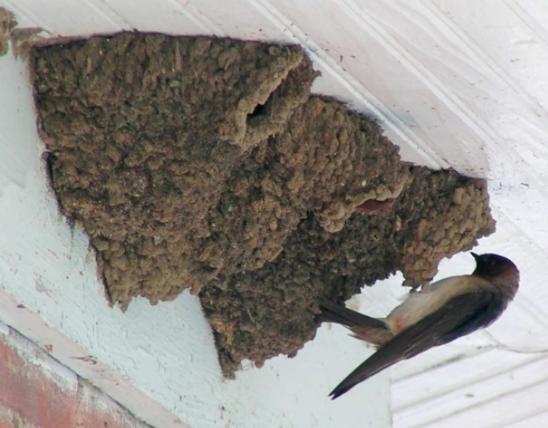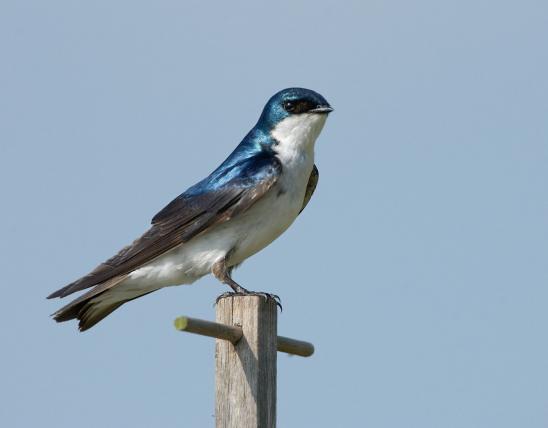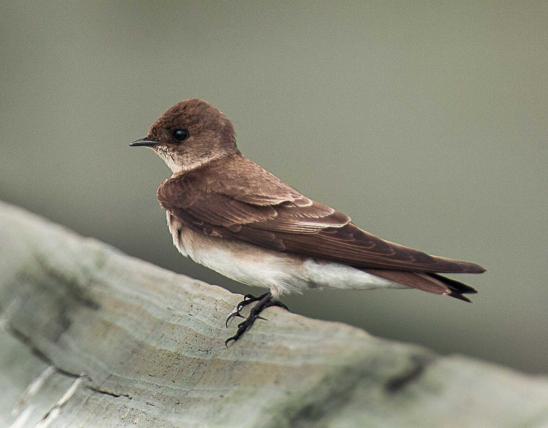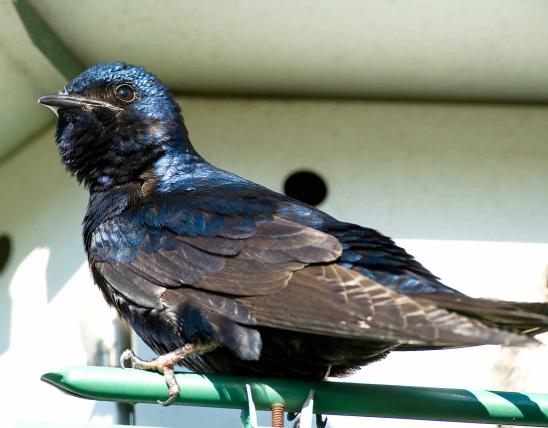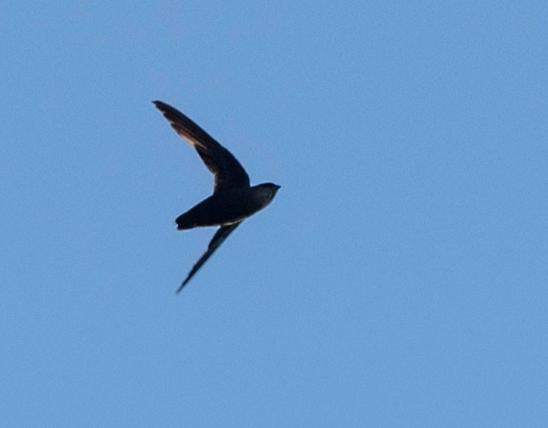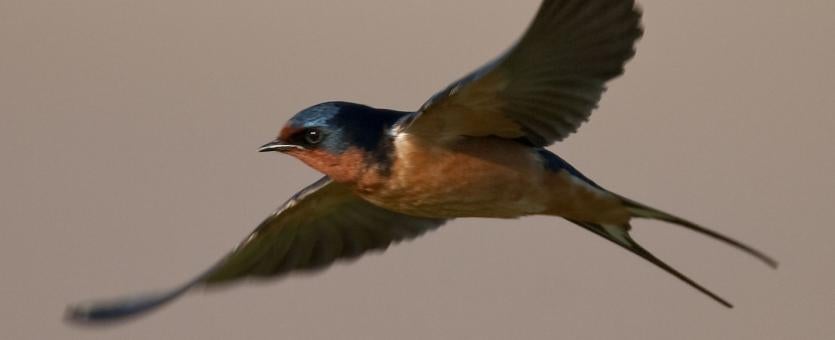
Barn swallow adult upperparts are dark iridescent blue black, and the tail is long and forked, with white spots visible when the tail is spread during flight. Underparts are buff or cinnamon with a dark chestnut throat. The lighter belly is separated from the throat by a narrow blue-black band. The song is a long, twittering chatter with guttural sounds interspersed. Call notes are sharp kit-kit or svit-svit sounds.
Length: 6¾ inches (tip of bill to tip of tail).

Statewide.
Habitat and Conservation
Usually seen foraging for flying insects in open areas near farm buildings, bridges, culverts, or other open-structure buildings, and over water. They are sometimes seen with other swallow species in mixed flocks. Their cup-shaped mud nests are attached to a rough wooded beam or concrete structure. Barn swallows almost always build their nests on human-built structures, though originally they built them in caves and under overhanging cliffs.
Food
Swallows are amazingly agile fliers and catch flying insects on the wing. They eat mostly flies, along with flying beetles, wasps, butterflies, and other relatively large insects. Their peak presence in our state from April through September coincides with the time when insects are abundant and available for them to eat and to feed to their young.
Status
Common summer resident nearly throughout North America. They are distributed worldwide. In the Old World, barn swallows migrate seasonally between Eurasia and Africa.
Life Cycle
Swallows arrive in Missouri in March and April and begin building nests. Like cliff swallows, barn swallows build cup-shaped nests from mud they collect from muddy pools or stream banks, adhering it to the side of a rough wall under a sheltering overhang, lining the nests with plant materials and feathers. Barn swallows usually have two broods. In July and August, swallows gather in ever-larger flocks; by the end of October, they have left for Central and South America.
Human Connections
People not fond of insects can appreciate their insectivorous diet. They are sometimes attracted to ground-up eggshells or other shell-based grit provided on an open platform. Some people attract them with special nest boxes or by providing a welcoming barn with an open window or door.
Ecosystem Connections
Swallows help control populations of the many flying insects they eat. Imagine the impact they have in a wetland area in August, when a hundred thousand or more individuals of all six species have joined into one large group!


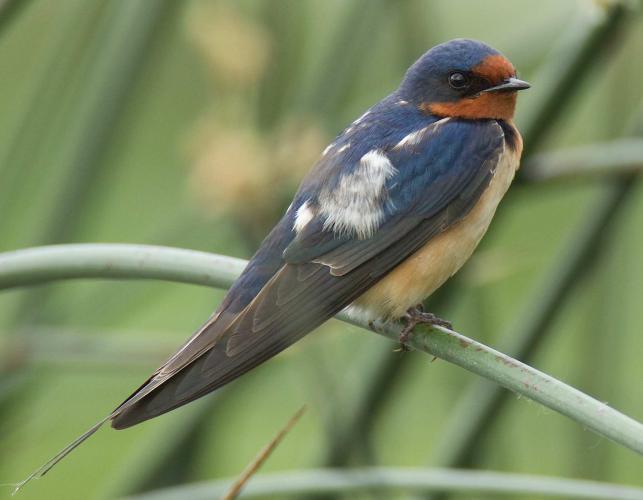
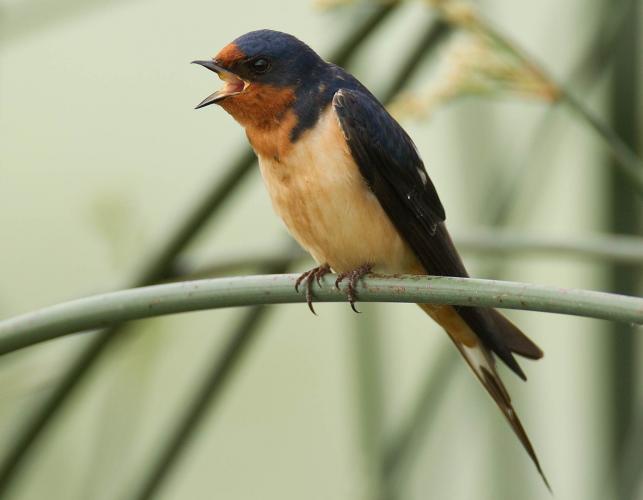



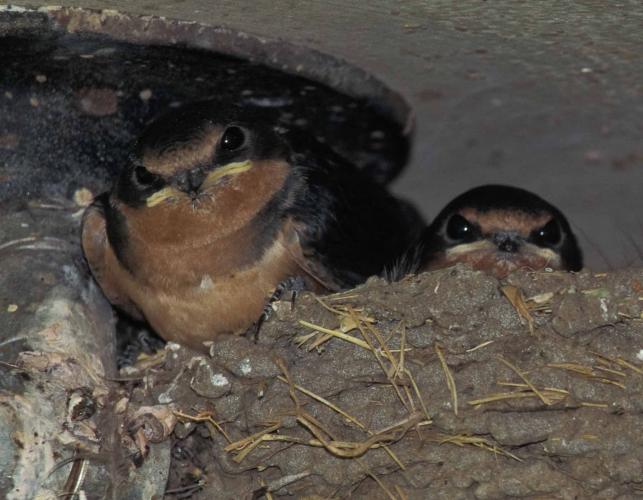




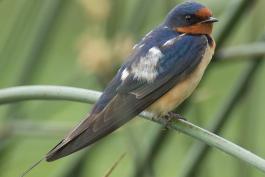



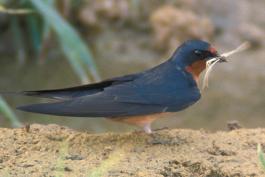
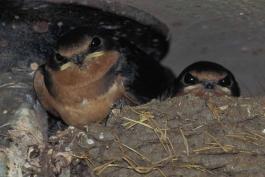

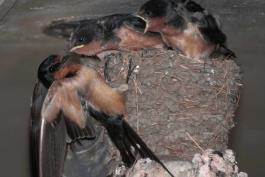
Where to See Species
About 350 species of birds are likely to be seen in Missouri, though nearly 400 have been recorded within our borders. Most people know a bird when they see one — it has feathers, wings, and a bill. Birds are warm-blooded, and most species can fly. Many migrate hundreds or thousands of miles. Birds lay hard-shelled eggs (often in a nest), and the parents care for the young. Many communicate with songs and calls.






















